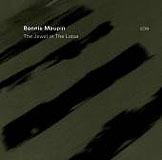Home » Jazz Articles » Album Review » Bennie Maupin: The Jewel In The Lotus
Bennie Maupin: The Jewel In The Lotus
That The Jewel In The Lotus, first released in 1974, has finally been issued on CD is worth celebrating for two reasons: first, the music is of the highest quality; and second, Bennie Maupin has not recorded much as a leader, with Penumbra (Cryptogramophone, 2006) and Driving While Black (Intuition, 1997) his most recent releases.
While Maupin's reputation came from his bass clarinet work on Miles Davis' Bitches Brew (Columbia, 1969), here he plays mostly flute and soprano saxophone (the album itself lists just reeds, voice and glockenspiel), in many-layered, highly processed (reverb/echo) soundscapes.
Music can become iconic if the players manage to instill within it universal emotions that take what is stylistically time-bound and make it timeless. Every classic album, such as Miles Davis' Kind Of Blue (Columbia, 1959), stands outside of its time, seeming fresh and inspiring no matter how many times it is played.
Whether or not The Jewel In The Lotus should be considered at such an exalted level as Kind Of Blue, there is no question that the music transcends its milieu and presents strong images and highly charged emotions.
The album possesses a unified sound world that evokes lushness, open spaces, nature as both life-giver and destroyer, and a sense of peace and tranquility. Despite the presence of three drummers/percussionists (Frederick Waits, Billy Hart and Bill Summers), the music has very little distinct pulse for any period of time. The drumming/percussion is used as another voice in the mix, even when an African drum pattern surfaces.
Bassist Buster Williams plays an important role, many times providing a pedal point, but also acting as a voice—arco and plucked—that plays with and against Herbie Hanock's piano and electric piano. What Hancock does is miraculous, as he surrounds the soundstage with widely spaced chords and arpeggios when he is not creating percussive slabs of sound.
Above and within all of this is Maupin, enhanced by electronics (and overdubbing) almost to the point that his instruments lose their identity and become pure sound. Identifiable melody is not really the point; what is played is mostly thematic phrases, presented and then carried along by the winds of the group.
The result is a mesmerizing, swirling, pulsating and breathing set with the title track (and its surrounding prelude and postlude) epitomizing the musical conception.
To listen to The Jewel In The Lotus is to leave this world.
Track Listing
Ensenada; Mappo; Excursion; Past + Present = Future; The Jewel in the Lotus; Winds of Change; Song for Tracie Dixon Summers; Past is Past.
Personnel
Bennie Maupin
woodwindsBennie Maupin: reeds, voice, glockenspiel; Herbie Hancock: piano, electric piano; Buster Williams: bass; Frederick Waits: drums and marimba (left channel); Billy Hart: drums (right channel); Bill Summers: percussion, water-filled garbage can; Charles Sullivan: trumpet (2, 3).
Album information
Title: The Jewel in the Lotus | Year Released: 2007 | Record Label: ECM Records
< Previous
Kensington Suite
Next >
Just One of Those Things
Comments
About Bennie Maupin
Instrument: Woodwinds
Related Articles | Concerts | Albums | Photos | Similar ToTags
For the Love of Jazz
 All About Jazz has been a pillar of jazz since 1995, championing it as an art form and, more importantly, supporting the musicians who create it. Our enduring commitment has made "AAJ" one of the most culturally important websites of its kind, read by hundreds of thousands of fans, musicians and industry figures every month.
All About Jazz has been a pillar of jazz since 1995, championing it as an art form and, more importantly, supporting the musicians who create it. Our enduring commitment has made "AAJ" one of the most culturally important websites of its kind, read by hundreds of thousands of fans, musicians and industry figures every month.



















